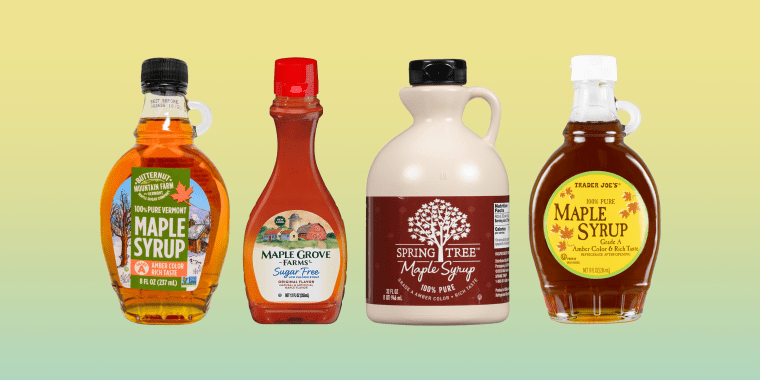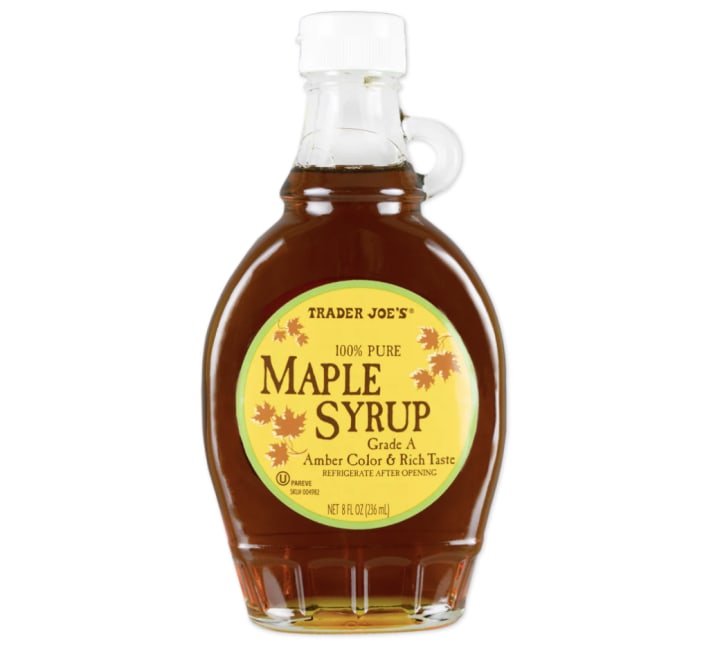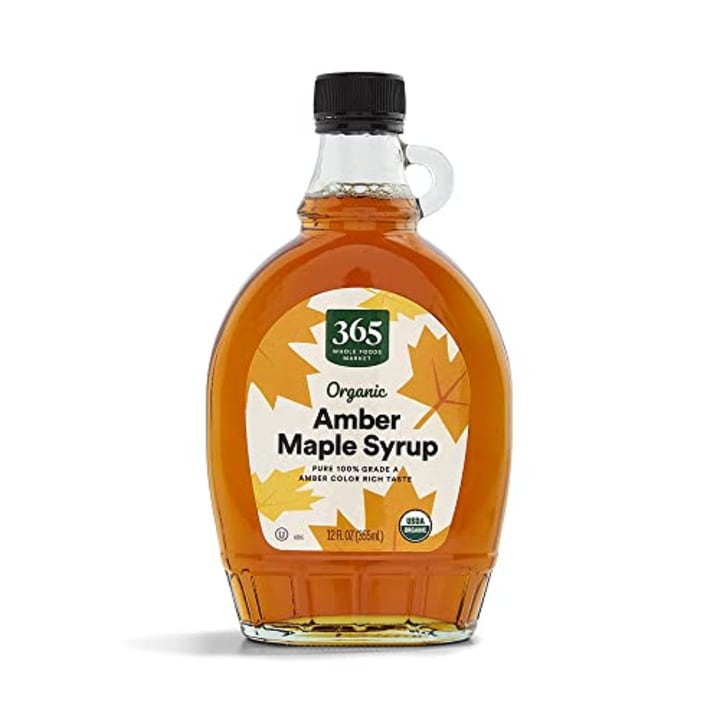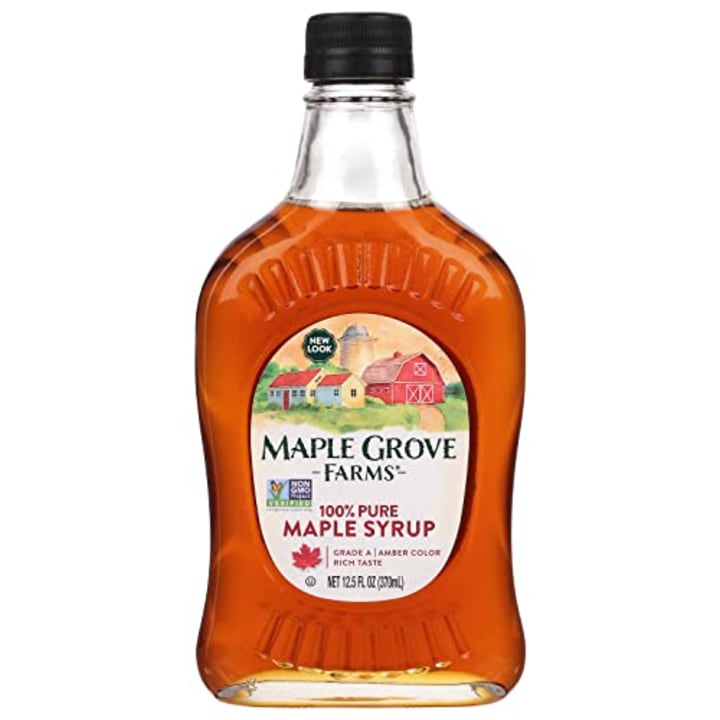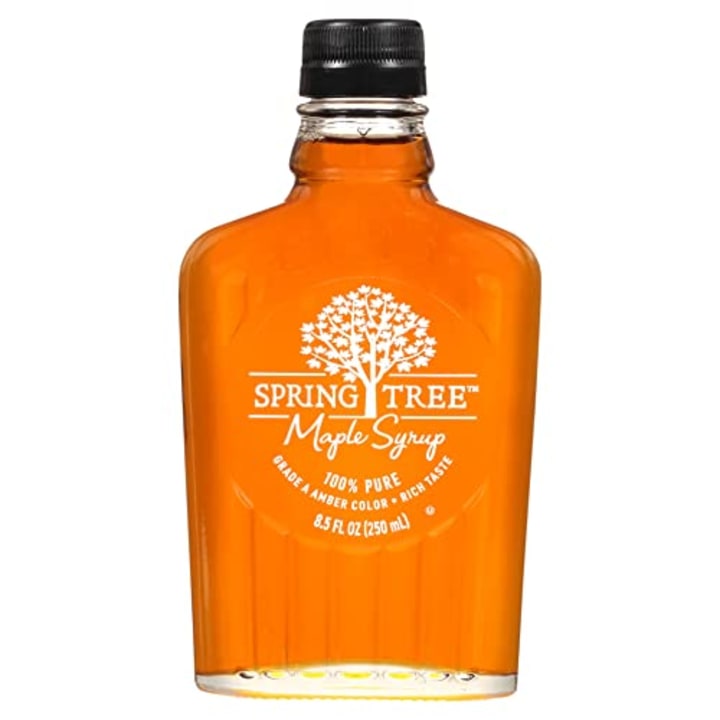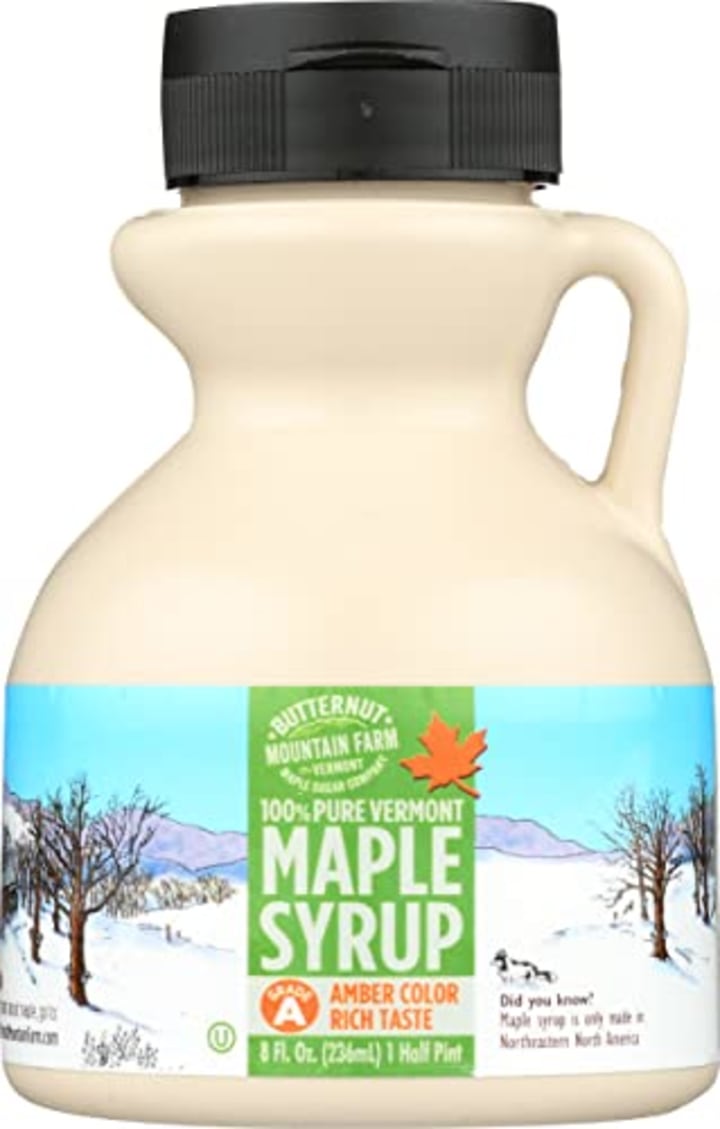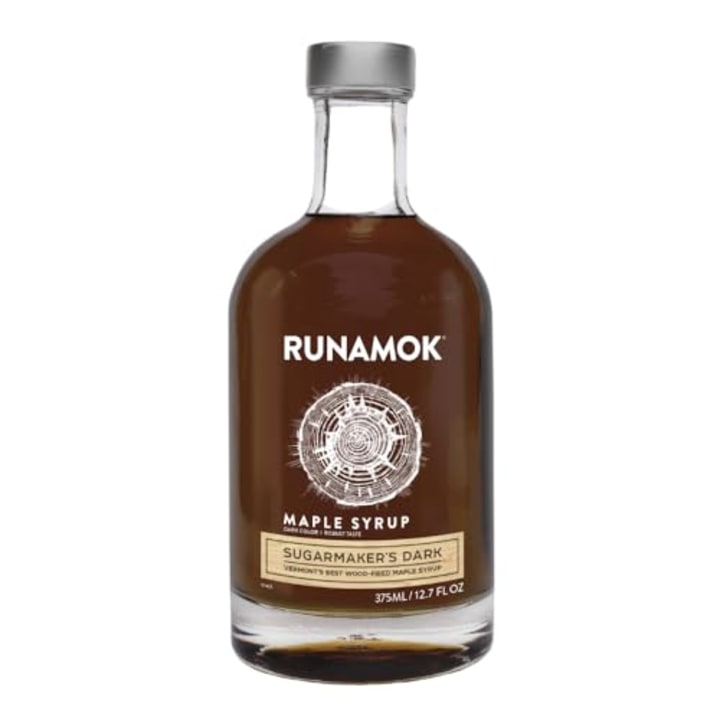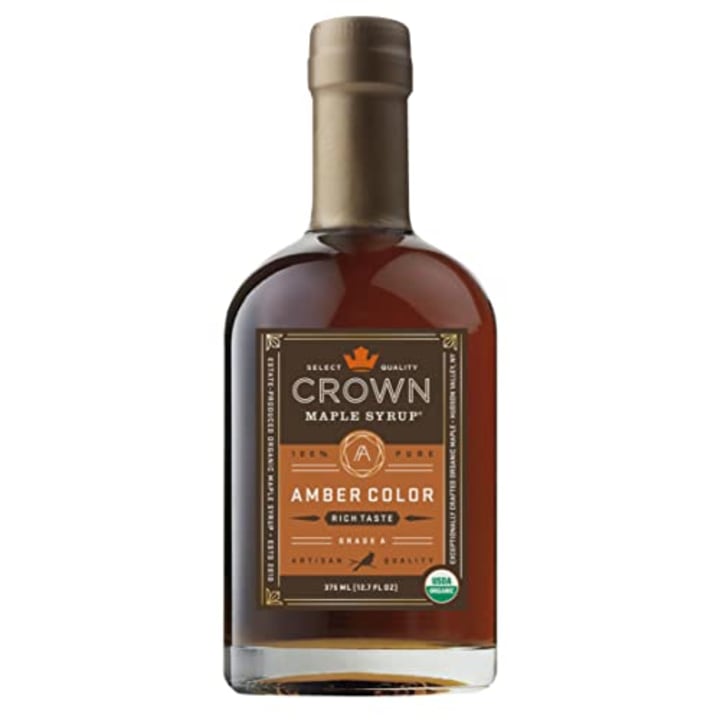Honey and jam pancake toppers, begone. These sticky spreads have no place on a Joey Skladany-approved breakfast table (unless paired with toast or an English muffin, of course). I run a very pro-maple syrup household, and I have no interest in changing my rigid ways.
I’d love to own a maple tree and tap into its trunk for morning servings of sweetness, but I know this will never be a reality. And while artisanal, small-batch varieties are my maple syrups of choice, they can often be out of budget for families consuming the condiment by the gallon. So I put 11 of the most popular store-bought options to the ultimate taste test.
But first, I spoke to Christopher Wilson, executive pastry chef of Twin Farms in Vermont, to provide a rundown of what home cooks should look for while shopping. He and his culinary team are experts on the ingredient — the resort harvests and makes its own maple syrup on-site. They use it in maple cider vinaigrette, a maple glaze for chicken breast, a caramelized maple custard tart and even maple bourbon ice cream topped with maple cotton candy.
“I’d shop for maple using three of the four Cs you would (consider) in searching for a diamond,” Wilson says. “Look for clarity, color, and carat (or ‘container,’ rather, to imply weight).”
Wilson provided a breakdown of the two most important characteristics:
- Clarity: High-quality products should be very clear and free of fine particles, which will eventually settle to the bottom and cause crystallization. If there are crystals forming in the container, it may be slightly old. That doesn’t mean it’s bad, it’s just not as fresh as it could be, making the syrup prone to further crystallization.
- Color: Like many things in the cooking world, color equals flavor. Generally, darker the syrup has a more intense flavor, so for home cooks, this factor comes down to personal preference. While a light and delicate Golden-grade Vermont syrup might be great on its own or drizzled on ice cream, it would get lost once cooked into a dish. A Very Dark-grade Vermont syrup, though, would hold its own when roasted with vegetables or baked.
“In Vermont, and in general, maple syrup is graded by light transmission (not quality),” explains Wilson. “‘Golden’ or ‘fancy’ has light transmission of 75% or greater, ‘amber’ is between 50% and 75%, ‘robust’ or ‘B-grade’ is between 25% and 50%, and ‘dark’ is less than 25%.”
Colors are determined by the point in the season the sap was harvested, he adds. Earlier harvesting leads to fewer impurities and a lighter color, while later harvesting creates more impurities, more flavor and a deeper color. Different grades of syrup are best for different types of recipes.
This ranking focuses purely on flavor, and I only sampled amber varieties to maintain consistency across the board.
Check out which bottle came out on top, including a deceptive bottom four that can’t legally be called “maple syrup” because the product doesn’t actually come from maple trees.
The Bottom Four: Mrs. Butterworth’s Original Syrup, Hungry Jack Original Syrup, Log Cabin Original Syrup and Pearl Milling Company Original Syrup
We know them, we love them, but we can’t quite classify them as genuine maple syrup. These are maple-flavored corn syrups, most with less than 2% of natural and artificial flavors. And while they’ve become pantry staples in many American households, I’d be doing a gigantic disservice to you all by recommending them over any of the seven options below.
Plus, if you’re reaching for one of these, are you really taking taste into utmost consideration? I think not. You want the sugar rush, the gummy mouthfeel and, most importantly, the nostalgia of Saturday mornings when there wasn’t a worry in the world except for what cartoons to watch on television.
7. Trader Joe’s 100% Pure Maple Syrup
Even Michael Jordan had bad days, which sums up how I feel about Trader Joe’s maple syrup. The typically stellar grocery store misses its shot with a runny, way-too-sugary concoction lacking any strong maple flavor. It could be that I purchased a bad bottle; it could also be that Joe doesn’t get it right every time, which is always a shocker.
6. 365 by Whole Foods Market Organic Amber Maple Syrup
This was one step up from Trader Joe’s with an actual maple aftertaste. But its thinness was a bit of a deterrent, especially on something like a pancake where I want a puddle of syrup resting on top. That said, I really enjoyed the surprisingly caramel-forward notes, and I think this would be an excellent addition to any maple-flavored baked good.
5. Maple Grove Farms Pure Maple Syrup
This is a fantastic option for a more budget-conscious consumer. It does, however, suffer from Trader Joe’s and Whole Foods’ watery syrup syndrome, which means you need to exercise extreme caution while pouring (nearly half of my jar emptied with little effort). The taste was darn-near perfect, though, with a balanced flavor profile that wasn’t too sweet or overpowering.
4. Spring Tree Pure Maple Syrup
This seems to be the brand that is taking over grocery store shelves. And rightfully so! Publix, Kroger, Walmart and Amazon tout it as one of the best on the market with an incomparable richness to complement the pat of butter on your morning carbs. It definitely lived up to the hype. Just be sure to use it in moderation — too much sucralose can really do a number on sensitive stomachs (I know from personal experience).
I was also impressed with the brand’s sugar-free alternative, which I mistakenly bought during my first go-around.
3. Butternut Mountain Farm Conventional Amber Maple Syrup
I am ever-so-slightly obsessed with Butternut Mountain Farm’s syrup. It’s — dare I say — somewhat buttery, but with a light and delicate texture that doesn’t attack the tongue the way some of the glorified cough syrups mentioned do.
Be sure to also check out the company’s maple candy for your new favorite post-meal indulgence.
2. Runamok Sugarmaker’s Cut Maple Syrup
I’ve generally found Runamok maple syrups to be hit or miss, based entirely on the brand's innovative flavors and offerings — yes, glitter syrup does exist and makes any waffle more fabulous, though it’s not as good as the salted caramel, which I can guzzle in excess. But I’ve never really compared its Sugarmaker’s Cut to other options. Once I did, I realized just how good it is with a harmonious balance of sweetness and richness that makes it the most versatile of the bunch. It’s now my go-to for homemade salad dressings and my morning oatmeal. Needless to say, you may just run amok in an effort to nab a coveted bottle for yourself.
1. Crown Maple Amber Color Rich Taste
I admittedly hadn't tried this syrup before the taste test, and I was a bit skeptical. It came highly recommended on Amazon, and sometimes mainstream grocery items with cult-like followings don’t jive with my difficult–to-impress palate. (I usually want to hate them in an act of pathetic rebellion.) Well, shame on me for harboring any doubts because Crown Maple was the crown jewel of all syrups in this taste test. And while I preferred its more robust darker varieties (because yes, I bought them all), the amber tasted most like it came directly from a tree, just with a gourmet twist. This syrup almost reminded me of melted toffee or some type of spicy molasses cookie eaten around the holidays. It was fantastic!
So you were right all along, America. I’ll now take a bite out of some humble pie, and pray that it’s drizzled with Crown Maple syrup.
